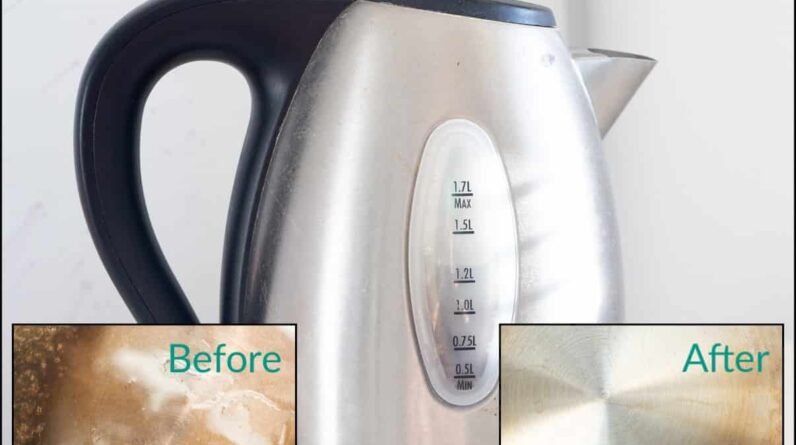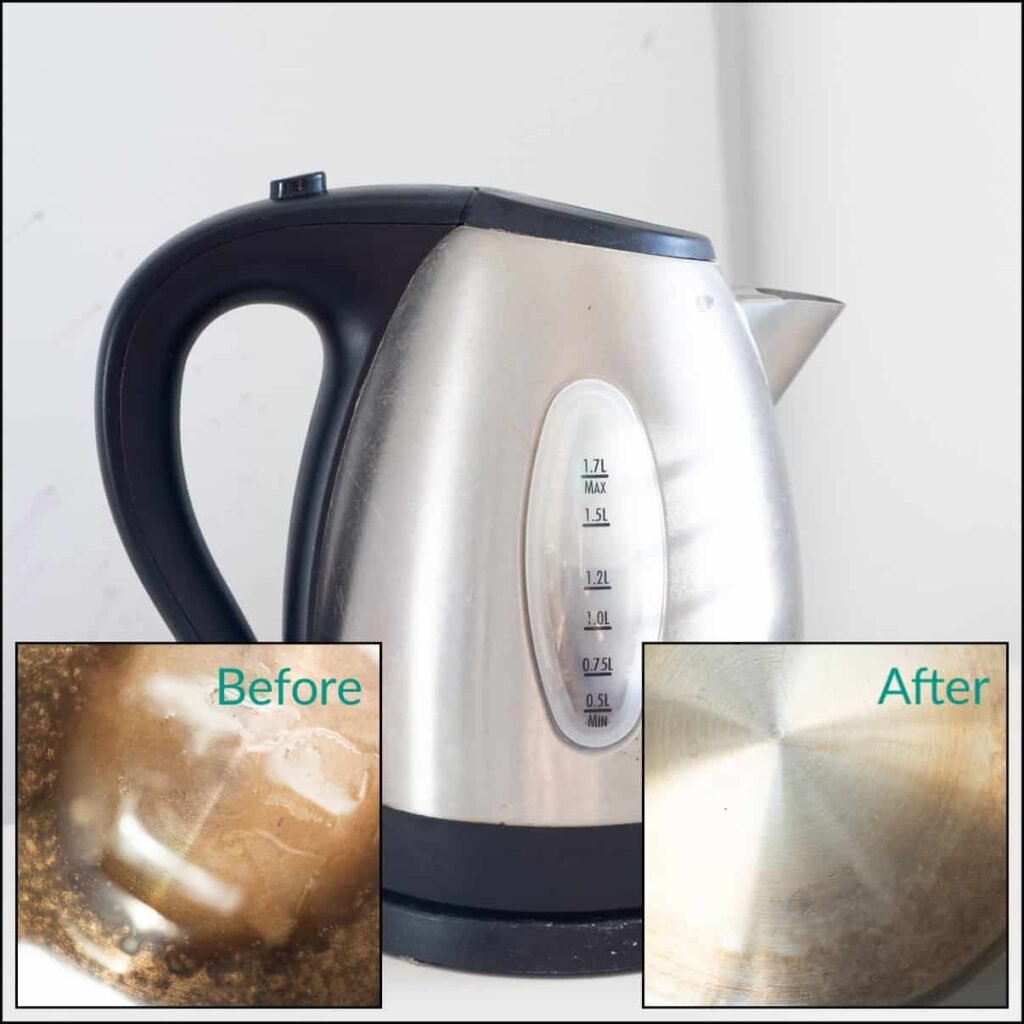
Do you ever find yourself frustrated with the annoying white residue left behind in your kettle? Limescale buildup can be a nuisance, affecting the taste of your beverages and diminishing the lifespan of your kettle. But fear not, because we have gathered the top tips for preventing limescale buildup in your kettle. By following these simple yet effective strategies, you’ll be able to enjoy clean and fresh-tasting boiled water for longer periods. Say goodbye to limescale headaches and hello to a sparkling kettle that will enhance your tea and coffee experience.
Regular Cleaning
Cleaning your kettle after every use is an important step in preventing limescale buildup. After boiling water, simply rinse out the kettle with warm water and wipe it dry. This will help remove any residue and prevent limescale from forming. It only takes a few seconds and can make a big difference in the long run.
Clean Your Kettle After Every Use
Make it a habit to clean your kettle after every use. This will not only prevent limescale buildup, but also help maintain the cleanliness and quality of your kettle. By rinsing out any remaining water and wiping away any residue, you’ll ensure that your kettle stays in good condition for longer.
Use Vinegar for Deep Cleaning
If you notice limescale buildup in your kettle, don’t worry! There’s an easy solution to get rid of it. Vinegar is a powerful natural cleaner that can effectively remove limescale. Simply fill your kettle with equal parts vinegar and water, and let it soak for about one hour. Then, rinse out the kettle with clean water and wipe it dry. Your kettle will be limescale-free and ready to use!
Descale Your Kettle Regularly
In addition to regular cleaning, it’s important to descale your kettle on a regular basis. Over time, limescale can accumulate, even if you take preventive measures. To descale your kettle, simply follow the instructions provided by the manufacturer or use a descaling solution designed for kettles. Regular descaling will help maintain the efficiency and performance of your kettle.
Filtered Water
Using filtered water in your kettle is another effective way to prevent limescale buildup. Tap water often contains minerals that can contribute to limescale formation. By using filtered water, you’ll reduce the amount of minerals present and minimize the risk of limescale accumulating in your kettle.

This image is property of nwmaids.com.
Avoiding Boiling Over
Nobody likes having water boil over their kettle. Not only does it create a mess, but it can also lead to limescale buildup. Follow these simple tips to avoid boiling over:
Do Not Overfill Your Kettle
One common mistake is overfilling the kettle. It’s important to only fill it with the amount of water you need. Overfilling can cause the water to boil up into the spout and overflow, leading to both a mess and potential limescale buildup. Be mindful of the maximum fill line indicated on your kettle and avoid going above it.
Avoid Aggressive Boiling
Another factor that can contribute to boiling over is aggressive boiling. When the water inside the kettle is boiling too vigorously, it can easily spill over the rim. To prevent this, adjust the heat so that the water simmers gently, rather than boiling rapidly. This will reduce the likelihood of water boiling over and creating a mess that can lead to limescale buildup.
Avoiding Hard Water
Hard water is a common culprit when it comes to limescale buildup. Here are some tips to help you avoid hard water-related limescale issues:
Identify if You Have Hard Water
To determine if you have hard water, keep an eye out for signs such as white residue on your glasses, faucets, or showerheads. If you notice these signs, chances are you have hard water. You can also use a water testing kit or contact your local water supplier for information on the water hardness in your area.
Use Water Softeners or Conditioners
If you have hard water, using water softeners or conditioners can help reduce the mineral content and prevent limescale buildup. These products work by binding to the minerals in the water and preventing them from accumulating in your kettle. Follow the instructions provided with the water softeners or conditioners to ensure effective results.

This image is property of garlicdelight.com.
Choosing the Right Kettle
Choosing the right kettle can make a difference in preventing limescale buildup. Consider the following factors when selecting a kettle:
Opt for Kettles with Limescale Filters
Many kettles come with built-in limescale filters. These filters help trap the minerals present in the water, preventing them from entering your kettle and causing limescale buildup. When purchasing a new kettle, look for models that feature limescale filters for added convenience and limescale prevention.
Consider Stainless Steel or Glass Kettles
Stainless steel or glass kettles are less prone to limescale buildup compared to plastic ones. These materials are less porous, making it harder for limescale to adhere to the surfaces. Additionally, stainless steel and glass kettles are easier to clean and maintain, ensuring a longer lifespan for your kettle.
Using Lemon Juice
Lemon juice is a natural and effective solution for preventing limescale buildup in your kettle. Follow these steps to use lemon juice:
Add Lemon Juice to Your Kettle
Simply add the juice of one or two lemons to your kettle filled with water. Bring the mixture to a boil and let it sit for about 30 minutes. The acidity of the lemon juice will help break down limescale deposits, making them easier to remove. Afterward, rinse out the kettle with clean water and wipe it dry. Lemon juice not only prevents limescale but also leaves a fresh scent in your kettle.

This image is property of garlicdelight.com.
Avoiding Tea Bags or Loose Tea Leaves
Using tea bags or loose tea leaves directly in your kettle can lead to limescale buildup. To prevent this:
Use Tea Infusers or Strainers
Invest in a good quality tea infuser or strainer to use instead of placing tea bags or loose leaves directly in your kettle. These accessories will allow you to enjoy your favorite tea without the risk of limescale buildup. Simply place the tea leaves or bag in the infuser or strainer, then steep it in your cup or teapot.
Preventing Residue
To minimize the chances of residue formation in your kettle, follow these tips:
Avoid Boiling Unfiltered Water
As mentioned earlier, using filtered water can significantly reduce the mineral content that contributes to limescale buildup. By avoiding boiling unfiltered water, you’ll minimize the amount of residue left behind in your kettle.
Minimize Boiling Time
The longer you boil water in your kettle, the more time minerals have to adhere to the surfaces. To prevent residue formation, try to minimize the boiling time as much as possible. Only boil the amount of water you need, and avoid leaving it sitting in the kettle for extended periods.

This image is property of cdn.images.express.co.uk.
Preventing Contamination
To ensure your kettle stays clean and free from contamination, follow these guidelines:
Drain Water Between Uses
After using your kettle, make sure to drain any remaining water. Leaving water sitting in the kettle can lead to the growth of bacteria or mold, which can contaminate your kettle and affect the taste of your beverages. Simply open the spout and allow the water to thoroughly drain out before storing.
Store Kettle with Lid Off
To prevent moisture buildup and potential contamination, it’s recommended to store your kettle with the lid off. This allows any remaining moisture inside the kettle to evaporate, reducing the risk of bacterial growth. Additionally, storing the kettle with the lid off helps keep the interior dry, preventing any potential odors from developing.
Regular Maintenance
Regular maintenance is essential for keeping your kettle in top condition. Follow these steps to ensure optimal performance:
Replace or Clean the Filter Regularly
If your kettle has a removable filter, it’s important to clean or replace it regularly. Over time, the filter can become clogged with debris, affecting the kettle’s efficiency and performance. Simply follow the manufacturer’s instructions on how to clean or replace the filter to maintain optimal functionality.
Check the Kettle’s Interior for Buildup
Regularly inspect the interior of your kettle for any signs of limescale buildup or residue. If you notice any, take the necessary steps to remove it, such as using vinegar or lemon juice as mentioned earlier. By staying vigilant and addressing buildup promptly, you’ll ensure that your kettle remains clean and free from limescale.
By following these tips and incorporating them into your regular kettle maintenance routine, you can effectively prevent limescale buildup and ensure that your kettle stays in optimal condition. Not only will this prolong the lifespan of your kettle, but it will also provide you with delicious, limescale-free beverages every time. Cheers to a clean and efficient kettle!

This image is property of garlicdelight.com.






